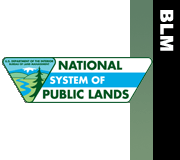|
Print Page | ||||||||||||
There are an estimated 54 million U.S. citizens with disabilities, many of whom may use the Public Lands or be employed by the BLM. Access means freedom and the BLM is committed to providing the highest possible level of access to its facilities, programs, services, and activities on the public lands for persons with disabilities. This level of access must be consistent with BLM’s mandate of multiple-use management and dispersed recreational use of the public lands, and also includes access to employment opportunities.
|
Most recreation activities on the public lands occur outdoors, and, thus, BLM has focused its efforts on improving accessible outdoor recreation facilities. Although the BLM has challenges in providing accessibility to people with disabilities, it is committed to ensuring everyone has an equal opportunity to access the public lands. Much progress has been made toward that goal, but there is still much to do to achieve the desired level of access. To meet these challenges in a systematic way, the BLM manages its accessibility program from its Washington Office, and has collateral-duty state accessibility coordinators in each of its State Offices. Key elements of BLM’s Accessibility Program include:
Guiding Principles The following are the BLM’s guiding principles for its Accessibility Program:
Best Management Practices BLM uses a variety of best management practices in its Accessibility Program. Adherence to these management practices results in achieving its accessibility goals in a more cost effective and efficient manner. These practices include:
For a list of BLM’s Accessibility Program partners and cooperators, click here. To view various guidance that governs BLM Accessibility Program, click here. For a list of links related to BLM’s Accessibility Program, click here. BLM Contact Kay Ellis National Lead BLM Accessibility Program 202-452-7799
|
||||||||||||







